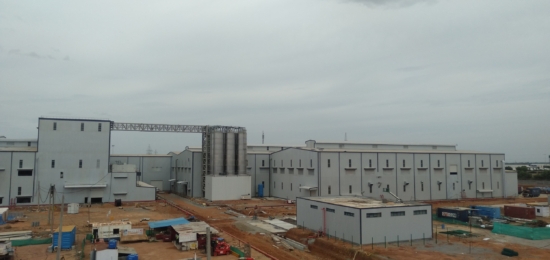First Apollo tyre rolls off production line at Andhra Pradesh factory
 Currently, the built-up area of this facility is 216000 square metres, and it employs around 850 people
Currently, the built-up area of this facility is 216000 square metres, and it employs around 850 people
Apollo Tyres has commissioned its seventh tyre factory globally and its fifth in India, with the first tyre rolling off the production line from the Andhra Pradesh greenfield facility in the southern part of the country on 25 June. Chairman, Onkar S Kanwar, vice chairman and MD, Neeraj Kanwar, supervisory board members along with the entire senior management team participated virtually in this momentous occasion.
Located in Chinnapanduru village in Chittoor district of Andhra Pradesh (AP), this facility of Apollo Tyres is spread over 256 acres. The company will invest close to 38 billion rupees in phase 1 of this greenfield facility. The site is expected to reach phase 1 production levels by 2022 when this plant will have the capacity to produce 15,000 passenger car tyres and 3,000 truck and bus radials per day. According to the company, the factory’s modular layout means capacity at this facility can be replicated with “minimal engineering efforts and with economies on investments”.
Commenting on the commissioning of new manufacturing unit, Onkar S Kanwar, chairman, Apollo Tyres Ltd, said: “This ultra-modern facility is a reflection of our growth aspirations and manufacturing capabilities, showcasing some of the best practices available across the globe in tyre manufacturing. This highly automated plant uses IT-driven systems and robotics, and employs young and skilled associates on the shopfloor, mostly hired locally. This plant mirrors the hopes and aspirations of the new self-reliant India. I would like to take this opportunity to thank the AP Government for all the support that they have extended towards setting up of this facility.”
Adhering to its environmental obligation, this facility has been designed to accommodate roof-top solar panels, to be introduced in a phased manner, for optimum usage of natural light for the shop-floor with an eco-friendly power source, and as a zero water discharge facility with an in-built effluent treatment plant. In addition, the company has ensured the usage of energy efficient utility and process equipments, and environment friendly coolants. To improve productivity and reduce human fatigue, ergonomically balanced and weight optimised material handling equipment has been used across the facility. A spink-like central utility corridor services both passenger car and truck radial units in a seamless fashion.
Currently, the built-up area of this facility is 216000 square metres, and it employs around 850 people.

 Bridgestone
Bridgestone Metzeler
Metzeler

Comments